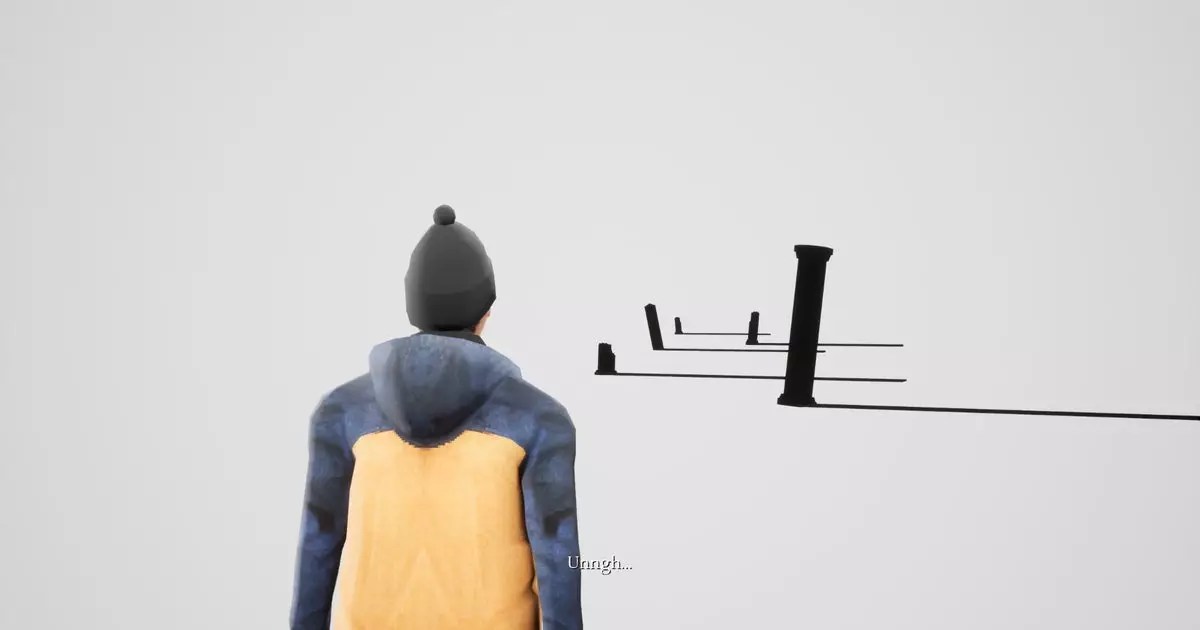In the realm of gaming, especially within the indie sector, creative projects often emerge from the shadows, startling us with their ingenuity and peculiar charm. 10 Dead Doves is one such project that has captivated the attention of gamers and critics alike. The title itself provokes curiosity, evoking images of eerie atmospheres and macabre humor. As I delve into this fascinating game, I find myself reflecting on how the indie horror gaming landscape has flourished, fostering an environment where uniqueness and experimentation are encouraged, even cherished.
At first glance, 10 Dead Doves appears to harbor an intriguing narrative, centered around the exploits of a character named Marcus, who is described as “the Most Pathetic Man on Earth.” This character’s journey with his companion Sean leads them to uncovering an urban legend known as “The Ant Farm.” Such a premise skillfully straddles the line between horror and humor, hinting at the absurdity lurking within the dark corners of traditional horror tropes. The protagonists’ quest through the Appalachian Trail adds depth to the narrative, grounding its supernatural elements in a recognizable, albeit spooky, setting.
The game’s unique storytelling approach has the potential to resonate with a broad audience; it sparks a blend of intrigue and an inexplicable urge to laugh at the absurdities of life. This motif of darkness enveloping lighthearted chaos is, after all, a familiar one in various successful indie horror titles.
From a technical standpoint, 10 Dead Doves stands out due to its aesthetic choices. The developers opted for a medium poly papercraft style and fixed-angle perspectives, evoking a nostalgia that resonates with retro gaming sensibilities. This artistic direction should not be perceived merely as an homage to the past, but rather as a deliberate choice to create a disjointed and surreal atmosphere that emphasizes the game’s quirky nature. The use of tank controls might feel outdated; however, it mirrors the very spirit of what makes indie horror compelling—its imperfections and charming awkwardness.
What’s more, the gameplay mechanics seem tailored to induce a sense of amusement alongside fear. Players may find joy in the juxtaposition of horror-infused situations paired with laughably absurd portrayals. This clever intertwining of humor and terror feels remarkably refreshing in an industry where horror often tiptoes around genuinely amusing elements.
Critical Acclaim and Community Reaction
Critics like Rebecca Jones have already articulated their admiration for the game, particularly connoting that it has the capacity to invoke nostalgia while also standing alone as a distinctive piece of art. Opinions surrounding the game suggest it does not aim for the lofty artistic aspirations characteristic of many critically acclaimed indie films—such as those produced by A24—but instead revels in its awkward charm.
This understanding leads to conversations about community engagement; fans are likely to rally behind 10 Dead Doves, treating it as a shared experience that celebrates the quirks inherent in low-budget productions. The decision to promote the game through unconventional methods, like the developers singing the title acapella, forges a deep connection with potential players, amplifying sentiments of anticipation.
In the end, 10 Dead Doves emerges as an enticing exploration of how indie horror games can subvert expectations. With a narrative that dances between absurdity and brooding mystery, a distinctly playful visual identity, and gameplay that encourages laughter amid moments of fright, it stands poised to leave its mark on the indie gaming scene. As the release date draws near this December, the excitement builds for what promises to be a delightfully unconventional experience. For those who revel in both the eerie and the oddball, 10 Dead Doves is not to be missed—it represents the heart and soul of independent game development.


Leave a Reply